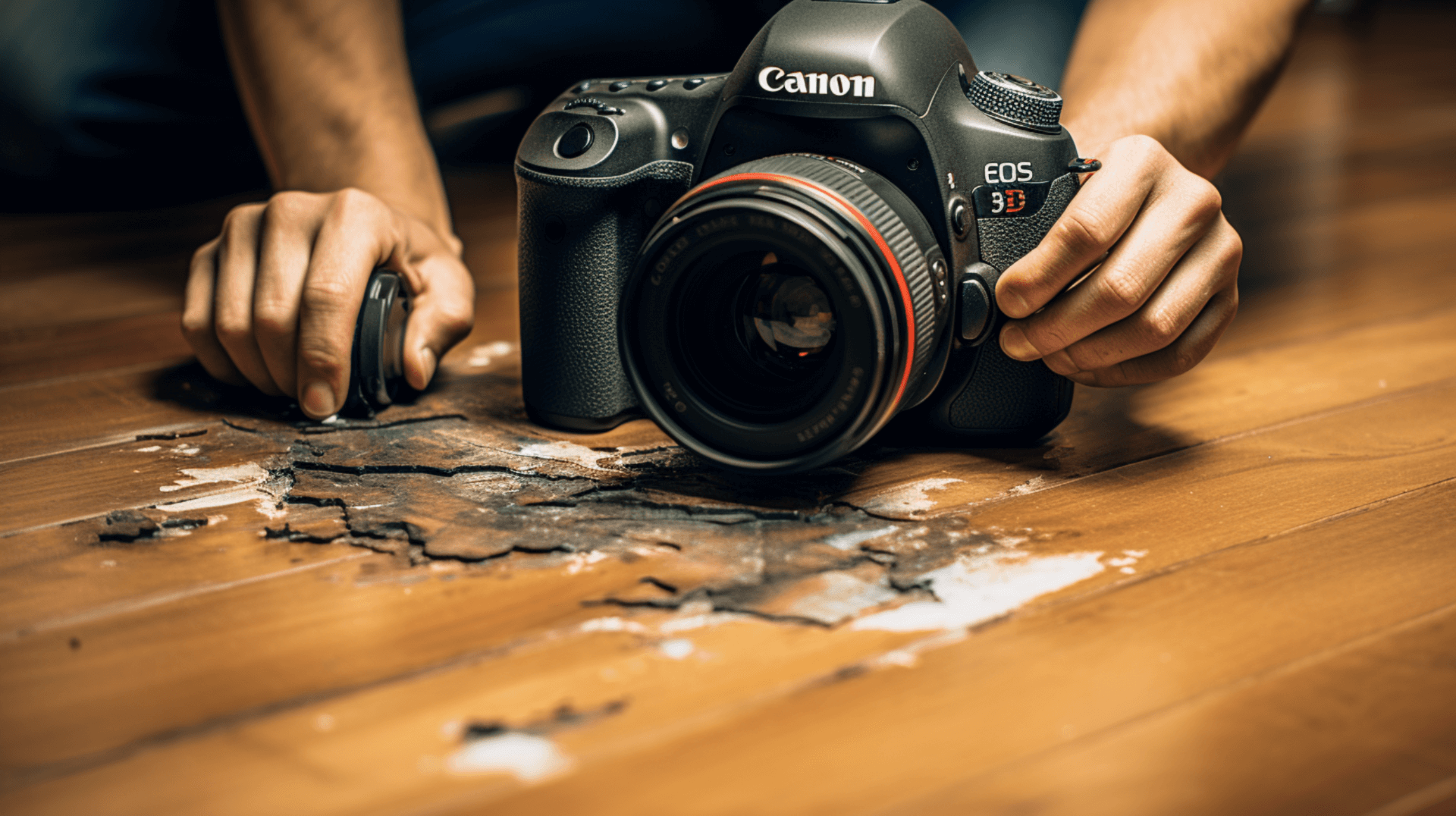Understanding the Basics of Wooden Floor Damage
Wooden floors are a popular choice for many homes and businesses due to their beauty and durability. they can be susceptible to damage from scratches, dents, and other forms of wear and tear. Understanding the basics of wooden floor damage can help you identify and address any issues before they become more serious.
Common Causes of Scratches and Dents:
Scratches and dents are the most common types of damage to wooden floors. They can be caused by various factors, including:
- Furniture: Moving furniture without proper protection can leave scratches and dents on the floor surface. It is important to use furniture pads or felt protectors to prevent damage.
- Pets: Pets’ claws can easily scratch wooden floors, especially if they are not properly trimmed. Regular nail trimming and providing scratching posts can help prevent damage.
- High heels: Walking on wooden floors with high heels can leave unsightly marks and dents. Encouraging guests to remove their shoes or providing protective mats can help prevent this type of damage.
- Dirt and debris: Dirt and debris can act as abrasives and cause scratches on the floor surface. Regular sweeping or vacuuming can help prevent this type of damage.
Type of Wooden Floor:
The type of wooden floor can affect the likelihood of damage. Hardwood floors are generally more durable than softwood floors and are less prone to scratches and dents. all wooden floors can be susceptible to damage if not properly maintained.
Signs of Damage:
It is important to regularly inspect your wooden floor for signs of damage. Look for scratches, dents, indentations, and discoloration. If you notice any of these signs, it may be an indication that your floor needs attention. Promptly addressing any damage can help prevent further deterioration and prolong the lifespan of your wooden floor.
By understanding the common causes of scratches and dents, considering the type of wooden floor you have, and regularly inspecting for signs of damage, you can take proactive steps to prevent and address wooden floor damage.
Identifying the Type and Extent of Damage
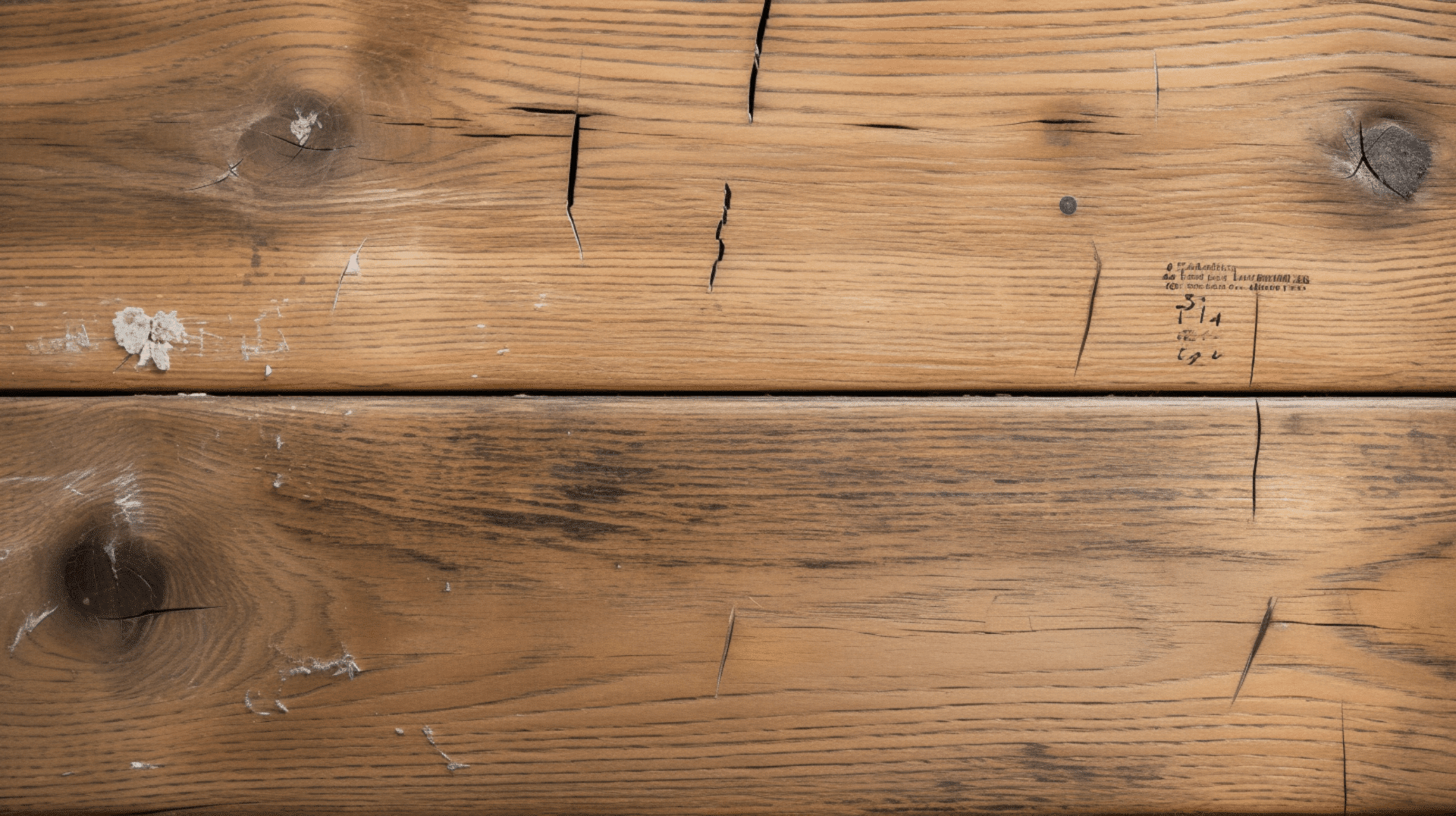
To differentiate between minor and major scratches and dents, look for signs of wear and tear such as discoloration, indentations, and deep scratches. Minor scratches and dents are usually shallow and can be easily buffed out with a polishing compound. Major scratches and dents, on the other hand, are usually deep and require more extensive repairs.
To assess the damage, use a flashlight to inspect the floor for signs of wear and tear. If the damage is superficial, a polishing compound can be used to buff out the scratches and dents. If the damage is more extensive, a professional may need to be consulted.
To determine if the damage is superficial or structural, look for signs of warping, cupping, or buckling. Warping, cupping, and buckling are all signs of structural damage and require more extensive repairs. If the damage is structural, a professional should be consulted to assess the extent of the damage and determine the best course of action.
It is important to note that recoating certain types of wooden floors with a urethane may void any manufacturer’s warranty. Additionally, avoid using cleaning products that claim to add a film to the floor surface, household wet dusting products, and wax, as these can cause further damage to the floor.
Preparing for the Repair Process
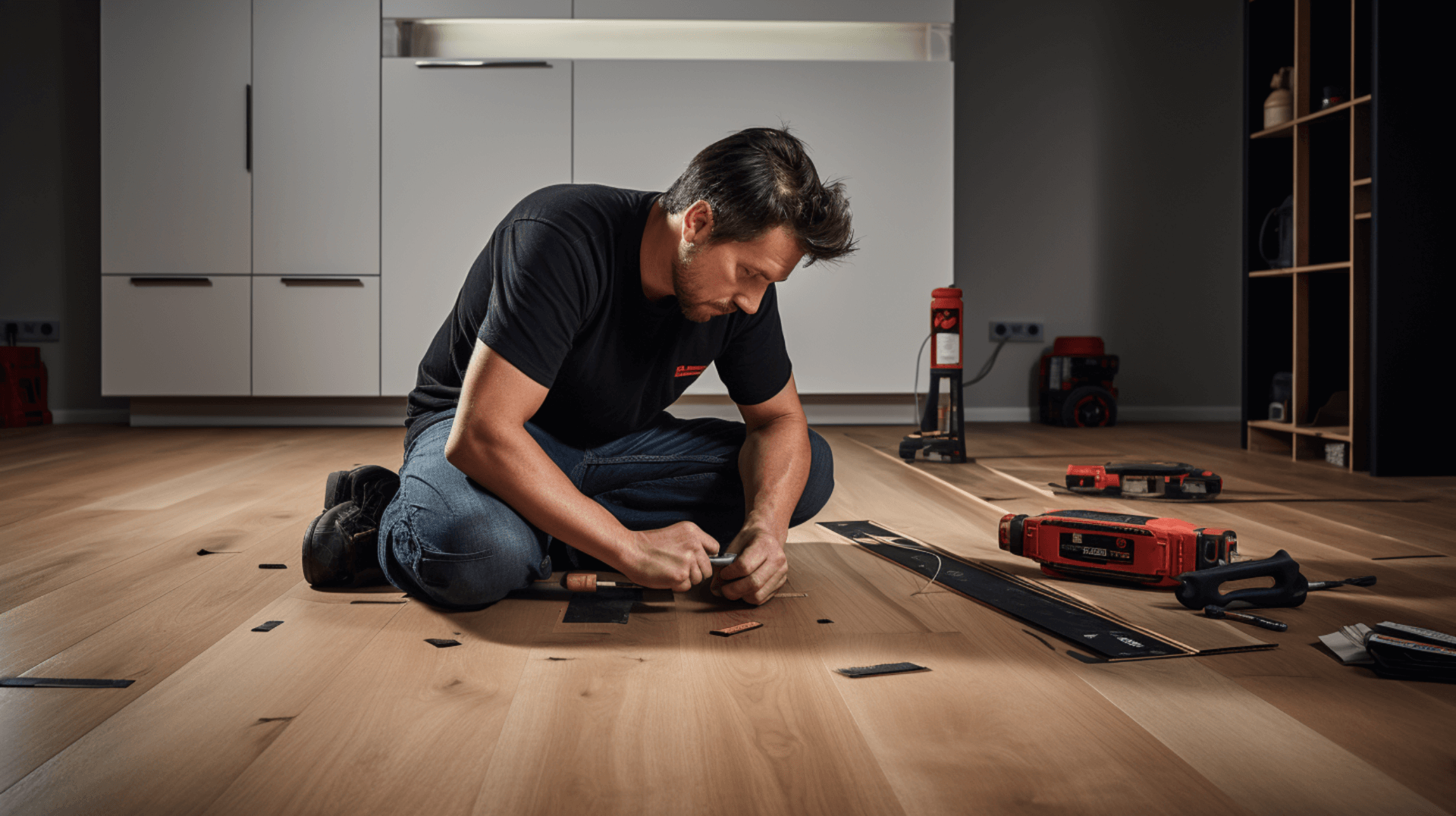
Preparing for the Repair Process:
To repair a wooden floor, you will need the following tools and materials: sandpaper, a vacuum cleaner, a dust mop, a putty knife, a hammer, a chisel, a drill, wood glue, wood filler, and a finish of your choice. Additionally, you may need insulation materials to meet the required thermal transmittance (U-value) standards. Refer to the manufacturer’s guidance for this level of performance, although this may vary depending on the floor type, shape, and size.
To prepare the damaged area for repair, start by removing any furniture or objects from the area. Vacuum the area to remove any dirt and debris, then use a dust mop to remove any remaining dust. Use a putty knife to remove any old finish or paint from the area. If the damage is deep, use a hammer and chisel to remove any loose pieces of wood. Drill any holes or cracks to prevent further damage and ensure a secure repair.
Once the damaged area is prepared, apply wood glue to any loose or damaged boards and press them firmly into place. Use wood filler to fill in any gaps or cracks, and sand the area to ensure a smooth surface. Vacuum or sweep away any dust or debris before applying the finish of your choice. Follow the manufacturer’s instructions for applying the finish, and allow it to dry completely before allowing foot traffic on the repaired area.
By following these steps and using the necessary tools and materials, you can properly prepare the damaged area for repair and ensure a successful restoration of your wooden floor.
Techniques for Repairing Minor Scratches
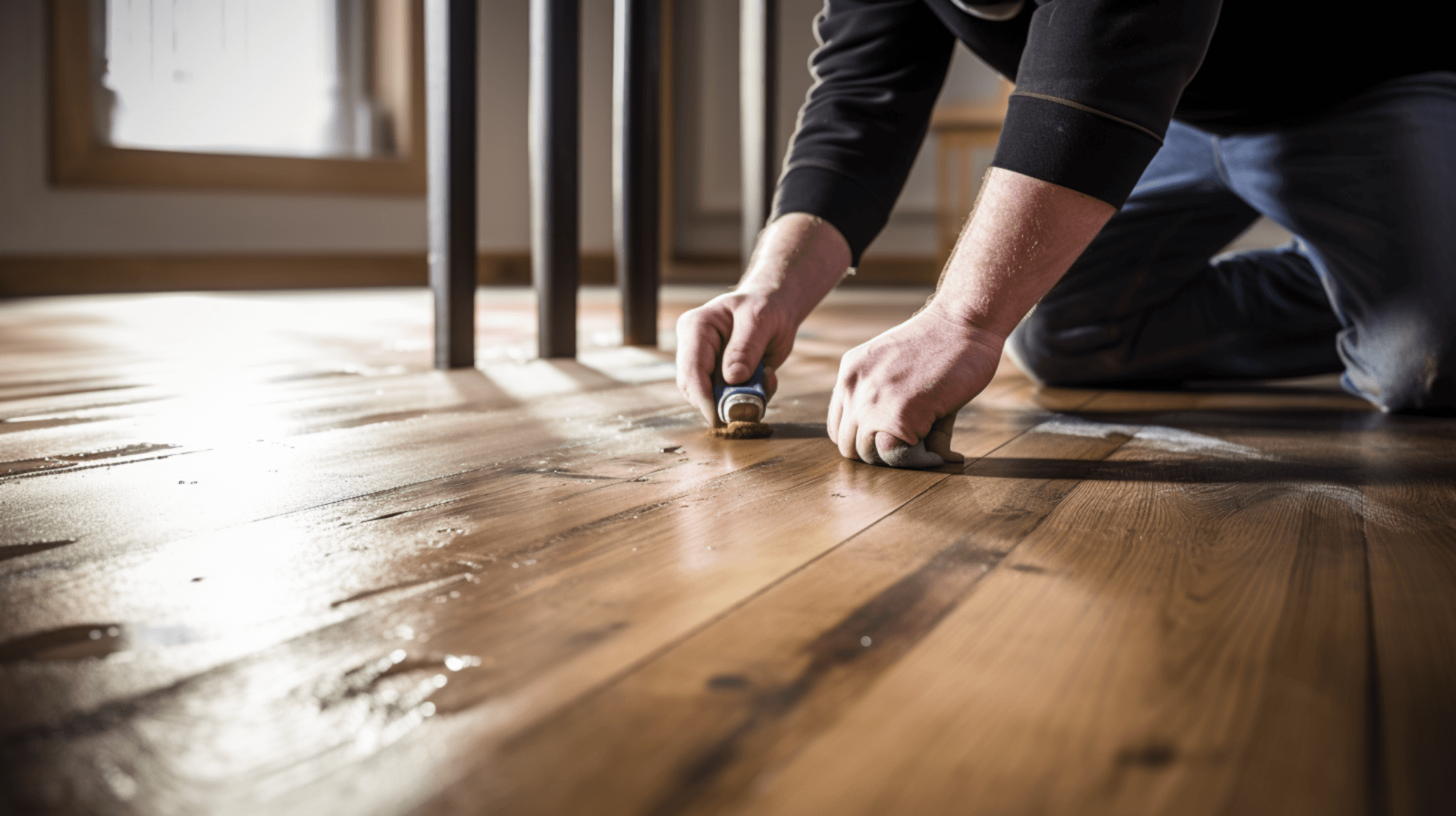
Wood filler is a great way to repair minor scratches on wooden floors. It is easy to use and can be found in most hardware stores. To use wood filler, start by cleaning the area around the scratch and removing any dirt or debris. Then, apply the wood filler to the scratch and use a putty knife to spread it evenly. Allow the wood filler to dry completely before sanding it down to create a smooth surface.
In addition to wood filler, there are other techniques that can be used to repair minor scratches. For example, a polishing compound can be used to buff out minor scratches and restore the floor’s shine. A wax stick can also be used to fill in minor scratches and blend them with the rest of the floor.
When using wood filler, it is important to ensure that the product does not contact the ground surface below with any excess material cut flush with joist tops. Additionally, the product should not be applied over electrical cables, recessed lighting, existing vents or ventilation gaps. For suspended upper floors, adequate fire resistance and fire stopping should be provided by floors between homes and at penetrations. The product should also be kept at least 8 cm away from any heat emitting devices and potential sources of ignition where the temperature is above 82C.
By following these techniques and considering the safety precautions, you can effectively repair minor scratches on your wooden floor and maintain its beauty.
Strategies for Repairing Major Dents and Scratches
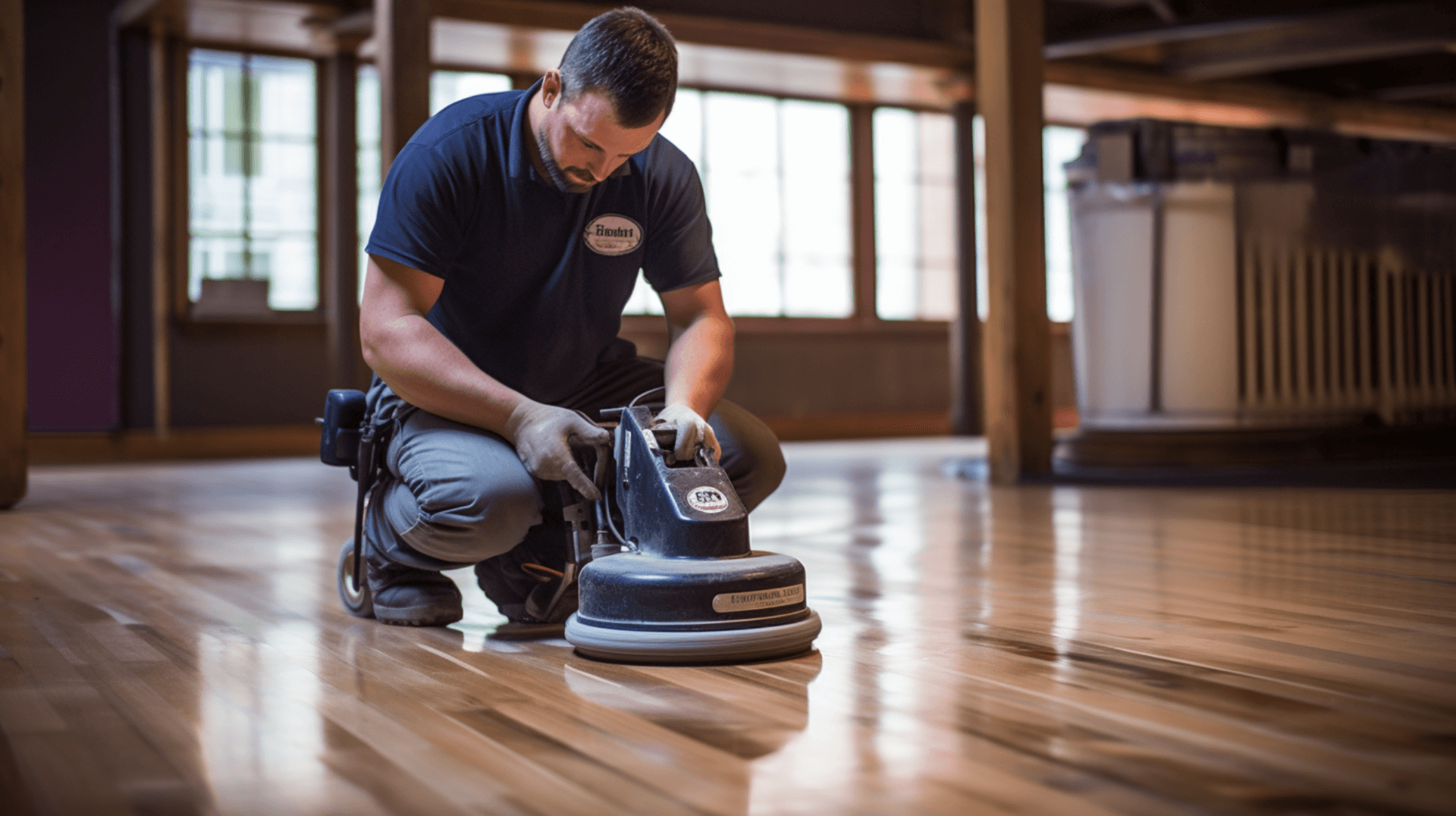
Strategies for Repairing Major Dents and Scratches:
Repairing major dents and scratches on wooden floors requires more extensive repairs than minor scratches. The process for repairing major dents and scratches involves removing the damaged area, replacing it with new wood, and refinishing the floor.
To begin the repair process, use a hammer and chisel to remove the damaged area. If the damage is extensive, you may need to remove the entire board. Once the damaged area is removed, use wood putty to fill in any gaps or cracks. Wood putty is a great choice for major repairs as it is easy to use and can be sanded down to create a smooth surface.
In addition to wood putty, other materials can be used for major repairs. For example, wood filler can be used to fill in larger gaps or cracks. Wood filler is a great choice for major repairs as it is easy to use and can be sanded down to create a smooth surface. Additionally, wood glue can be used to secure any loose boards or pieces of wood.
When repairing major dents and scratches, it is important to ensure that the product does not contact the ground surface below with any excess material cut flush with joist tops. Additionally, the product should not be applied over electrical cables, recessed lighting, existing vents, or ventilation gaps. For suspended upper floors, adequate fire resistance and fire stopping should be provided by floors between homes and at penetrations. The product should also be kept at least 8 cm away from any heat-emitting devices and potential sources of ignition where the temperature is above 82C.
By following these strategies and using the necessary tools and materials, you can effectively repair major dents and scratches on your wooden floor and maintain its beauty.
The Role of Sanding in Wooden Floor Repair
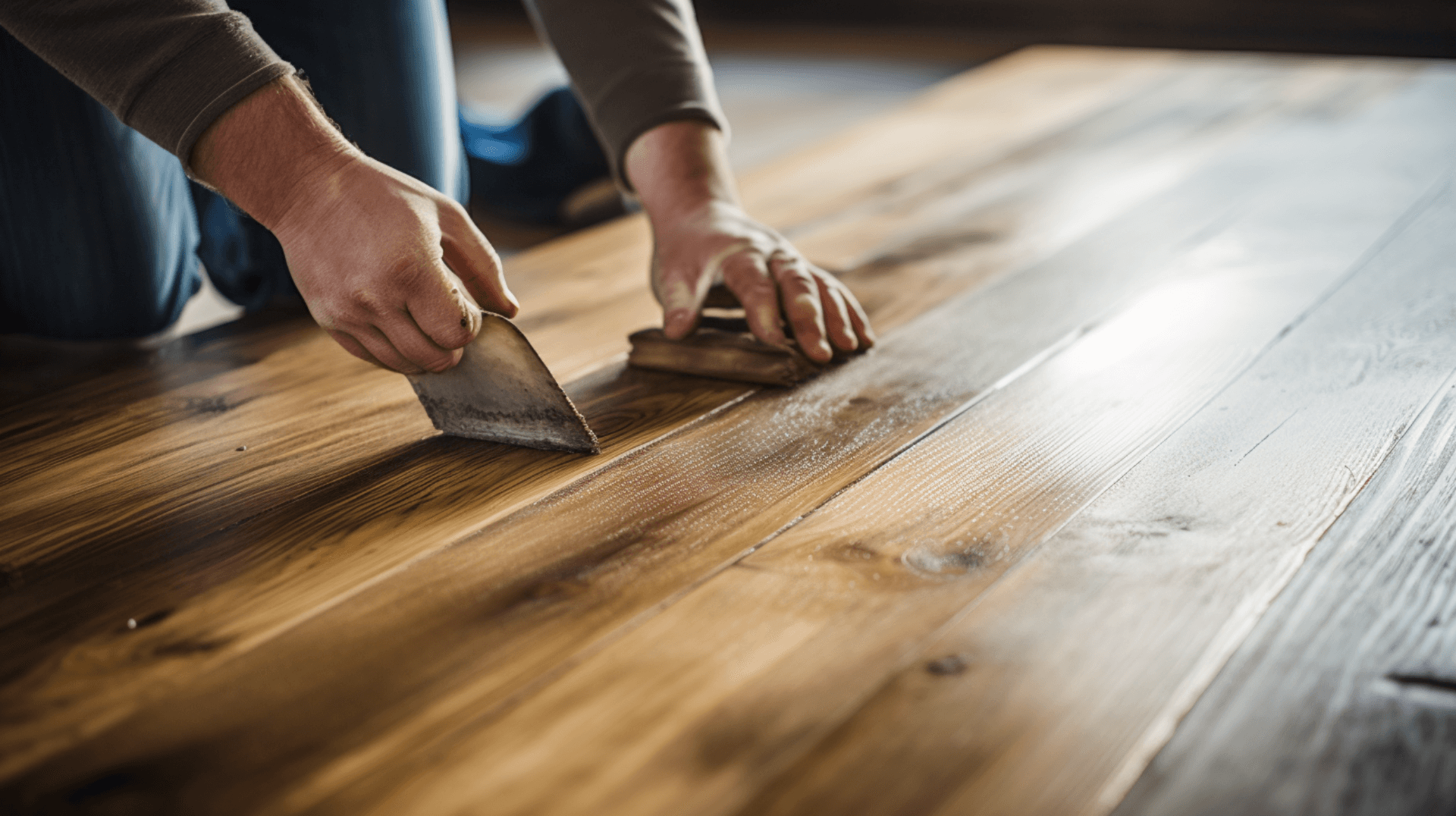
The Role of Sanding in Wooden Floor Repair
Sanding plays a crucial role in the repair process for wooden floors. It is important for several reasons. sanding helps to remove any old finish, paint, or debris that may be present on the floor surface. This is essential to create a clean and smooth surface for the new finish to adhere to. Sanding also helps to smooth out any rough patches or uneven surfaces, ensuring that the repaired floor is level and uniform.
The correct sanding sequence for wooden floor repair is to start with a coarse grit sandpaper and gradually move to a finer grit. This progressive sanding process ensures that any deep scratches or dents are effectively removed, and the surface is left smooth and even. Starting with a grit of 40-60 and gradually working up to a grit of 120-150 is recommended.
To ensure a smooth finish after sanding, it is important to follow a few key steps. always sand in the same direction as the grain of the wood to avoid creating any new scratches or marks. Additionally, vacuum the surface after each sanding step to remove any dust and debris. This will help to create a clean and smooth surface for the new finish. Finally, it is important to choose the correct sandpaper grits for each stage of sanding to achieve the desired smoothness.
By understanding the importance of sanding, following the correct sanding sequence, and taking the necessary steps to ensure a smooth finish, home and business owners can effectively repair their wooden floors and restore their beauty and durability. When adding extra insulation to a floor to improve its thermal performance, it is important to refer to the manufacturer’s guidance for the required level of performance, as this may vary depending on the floor type, shape, and size. Additionally, it is important to check the manufacturer’s technical information to ensure the materials used are certified and suitable for use as insulation under timber floors.
Selecting the Right Finish for Your Repaired Floor
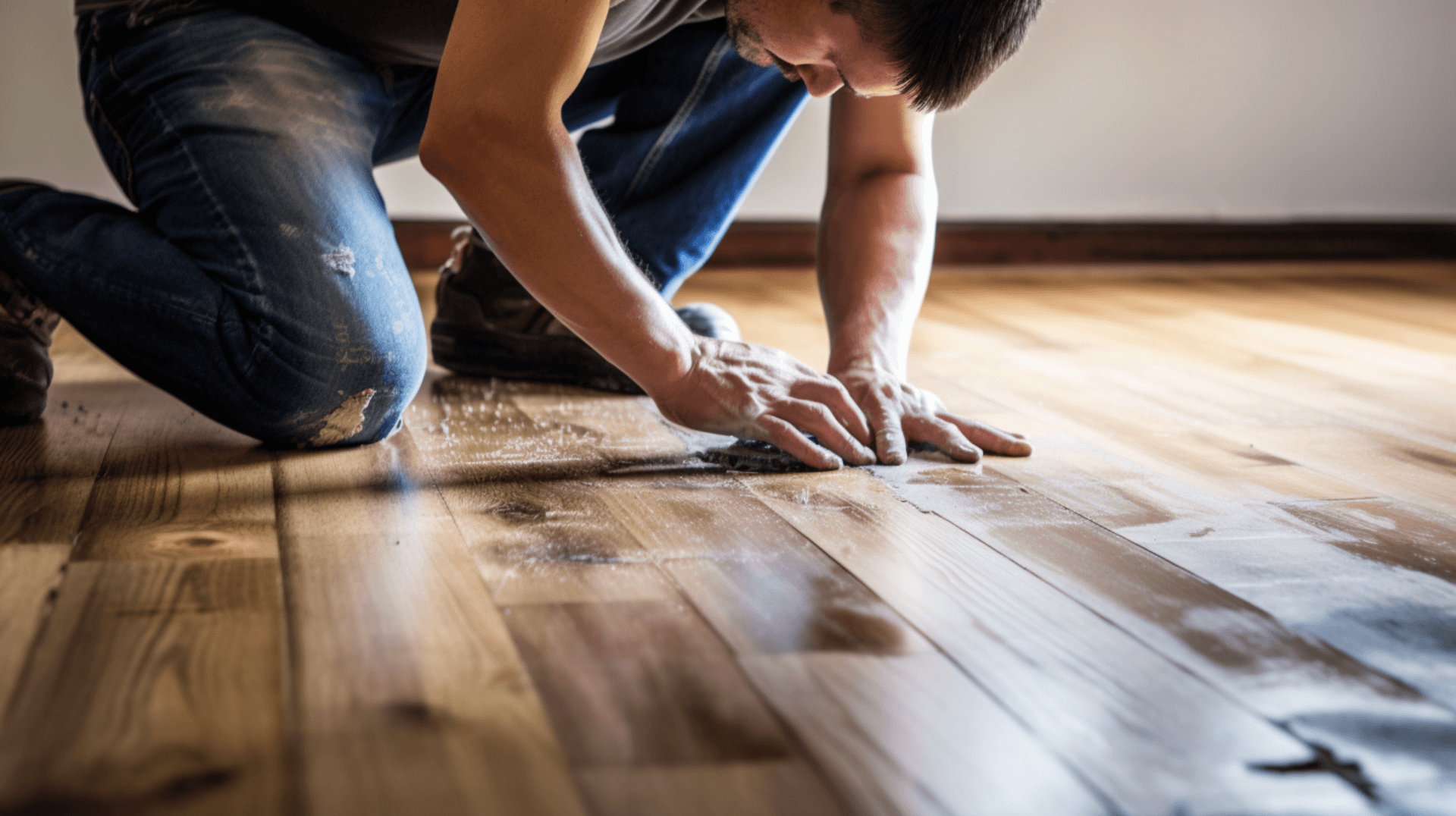
Selecting the Right Finish for Your Repaired Floor:
When repairing a wooden floor, selecting the right finish is essential for achieving the desired look and durability. There are a variety of finishes available for wooden floors, each with its own unique characteristics and benefits. The most common types of finishes for wooden floors are oil-based, water-based, and wax-based.
Oil-based finishes are the most durable and provide a natural, matte finish. They are ideal for high-traffic areas and can withstand wear and tear. Oil-based finishes also enhance the natural beauty of the wood and provide a warm, rich appearance. they can take longer to dry and may have a stronger odor during application.
Water-based finishes are less durable but provide a glossy finish. They are easier to apply and have a faster drying time compared to oil-based finishes. Water-based finishes also have lower VOC levels, making them a more environmentally friendly option. They are a popular choice for areas with less foot traffic or for those who prefer a more modern, sleek look.
Wax-based finishes provide a natural, matte finish and are the least durable. They are easy to apply and maintain, making them a good option for smaller repairs or touch-ups. Wax-based finishes create a soft, warm appearance and can be buffed to a desired sheen. they require more frequent reapplication and may not be suitable for high-traffic areas.
When choosing a finish for your repaired floor, consider the desired look, durability requirements, and maintenance preferences. If you want a highly durable finish that enhances the natural beauty of the wood, an oil-based finish may be the best choice. If you prefer a glossy finish and have lower durability needs, a water-based finish could be suitable. For smaller repairs or touch-ups, a wax-based finish may be a convenient option.
By considering these factors and understanding the characteristics of each type of finish, you can select the right finish for your repaired wooden floor that meets your aesthetic and functional needs.
The Importance of Regular Maintenance for Wooden Floors
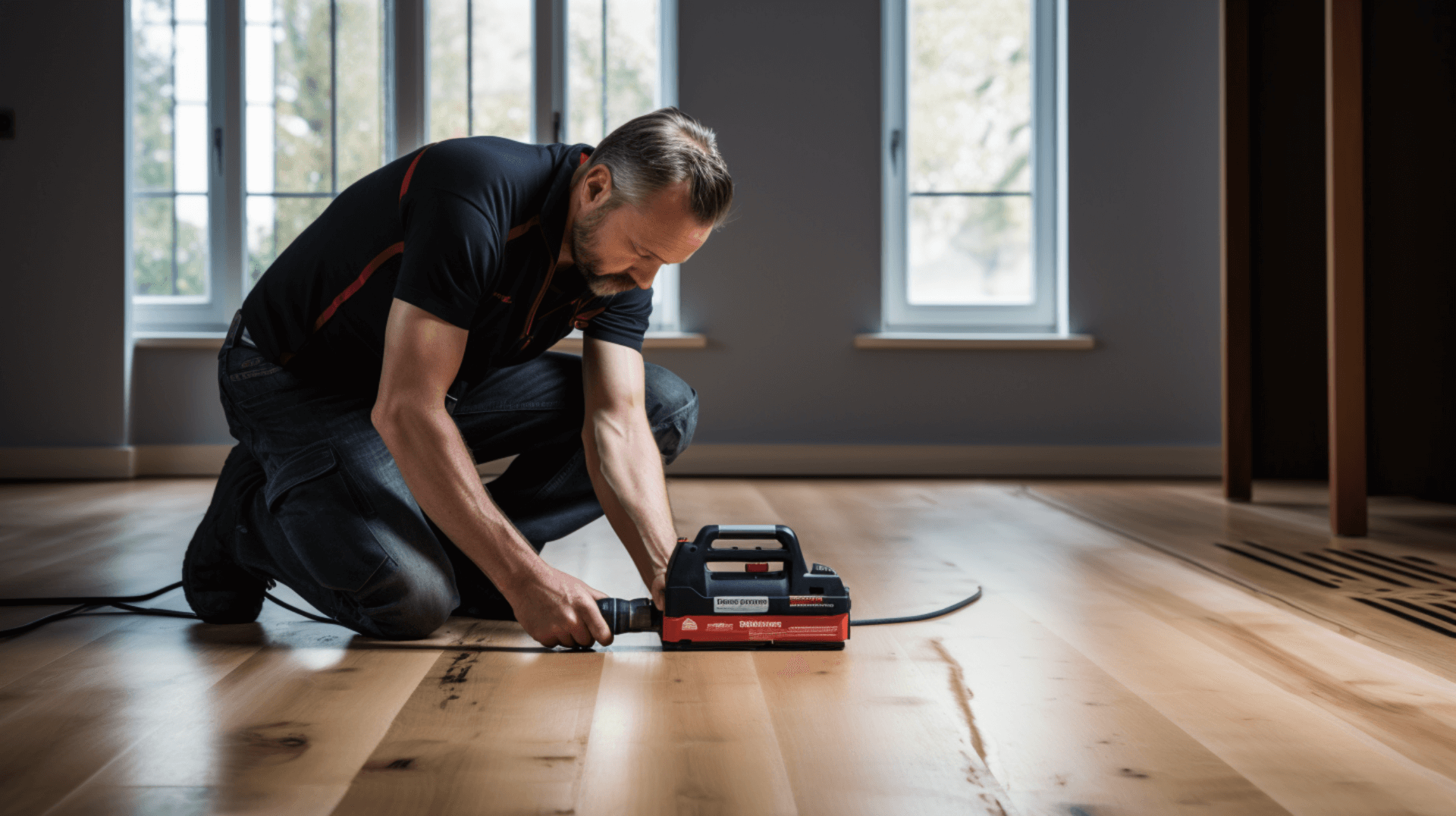
Regular maintenance is essential for keeping wooden floors looking their best and preventing scratches and dents. Proper cleaning and maintenance can help to protect the floor from dirt, dust, and other debris that can cause damage over time. Additionally, regular maintenance can help to extend the life of the floor and keep it looking beautiful for years to come.
The best practices for cleaning and maintaining wooden floors include sweeping or vacuuming regularly to remove dirt and debris, using a damp mop to clean the surface, and avoiding the use of harsh chemicals or abrasive cleaners. Additionally, it is important to avoid dragging furniture or other heavy objects across the floor, as this can cause scratches and dents. It is also important to leave room for expansion around the edges of each room and to seal the gaps between the floorboards and along the skirting to reduce draughts.
For optimal results, wooden floors should be professionally maintained at least once a year. Professional maintenance typically includes deep cleaning, polishing, and waxing to restore the floor’s shine and protect it from further damage. Additionally, professional maintenance can help to identify any potential issues and address them before they become more serious.
By following these best practices and scheduling regular professional maintenance, home and business owners can ensure that their wooden floors remain in optimal condition, preventing scratches and dents and preserving their beauty for years to come.
When to Seek Professional Help for Wooden Floor Repair
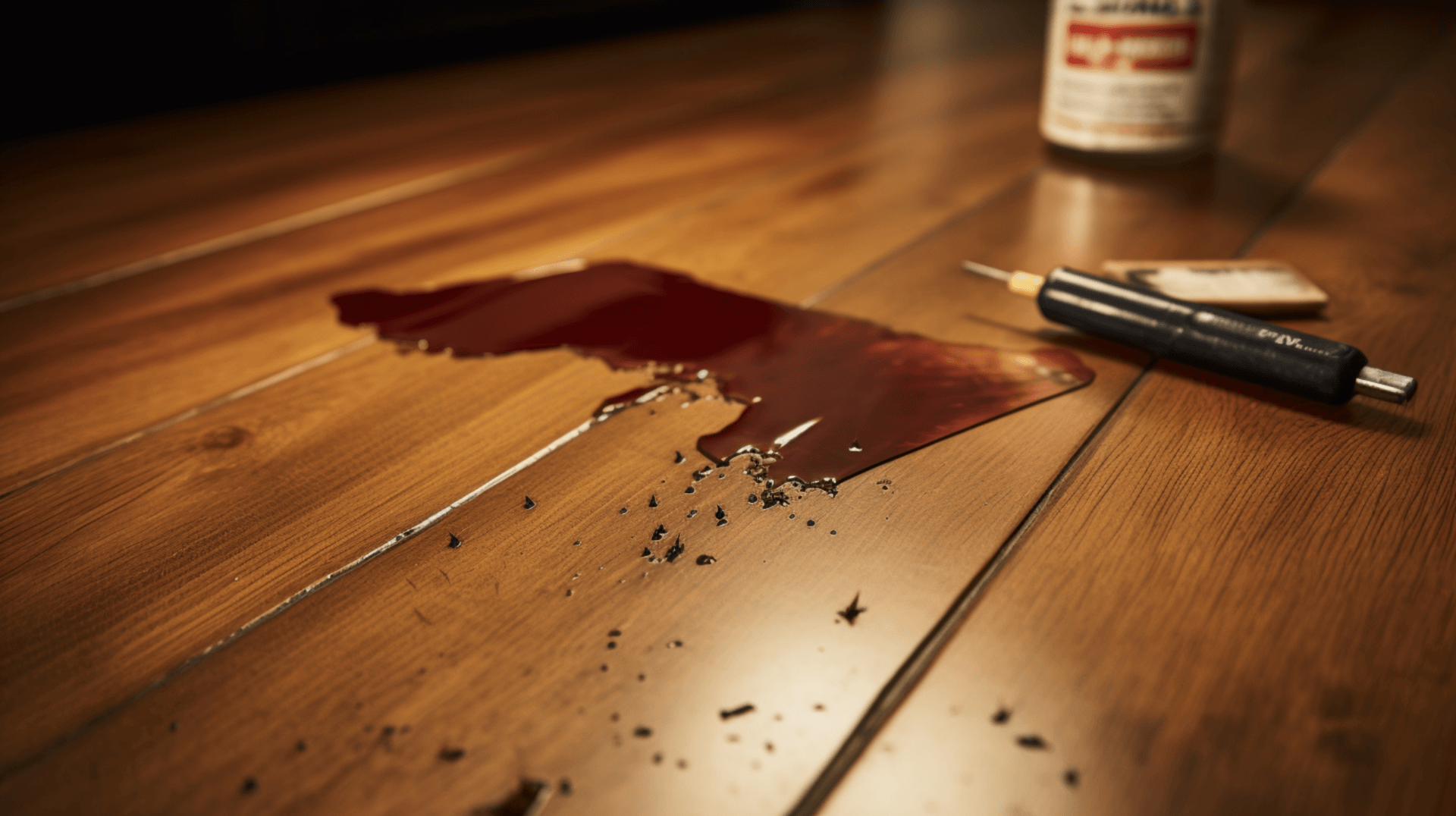
When it comes to wooden floor repair, there are certain types of damage that require professional help. These include deep scratches, large dents, water damage, and structural damage. These types of damage often require specialized tools and expertise to repair effectively. Professionals have the knowledge and experience to assess the extent of the damage and determine the best course of action for repair.
To find a reliable professional for wooden floor repair, it is important to do thorough research. Reading online reviews and asking for recommendations from friends and family can help you find reputable contractors. It is also important to ensure that the professional is licensed and insured, as this provides assurance that they have met the necessary requirements and have the proper coverage in case of any accidents or damages during the repair process.
When hiring a professional for wooden floor repair, you can expect them to assess the damage and provide a detailed plan for repair. They will have the knowledge and expertise to identify any underlying issues and address them before they become more serious. They should also be able to provide advice on the best materials and finishes for your floor, as well as the best techniques for repair. Additionally, they should be able to provide a timeline for the repair and answer any questions you may have. A professional repair service will strive to deliver high-quality workmanship and ensure that your wooden floor is restored to its original condition.
The Benefits of Choosing GJP Floor Sanding for Your Repair Needs
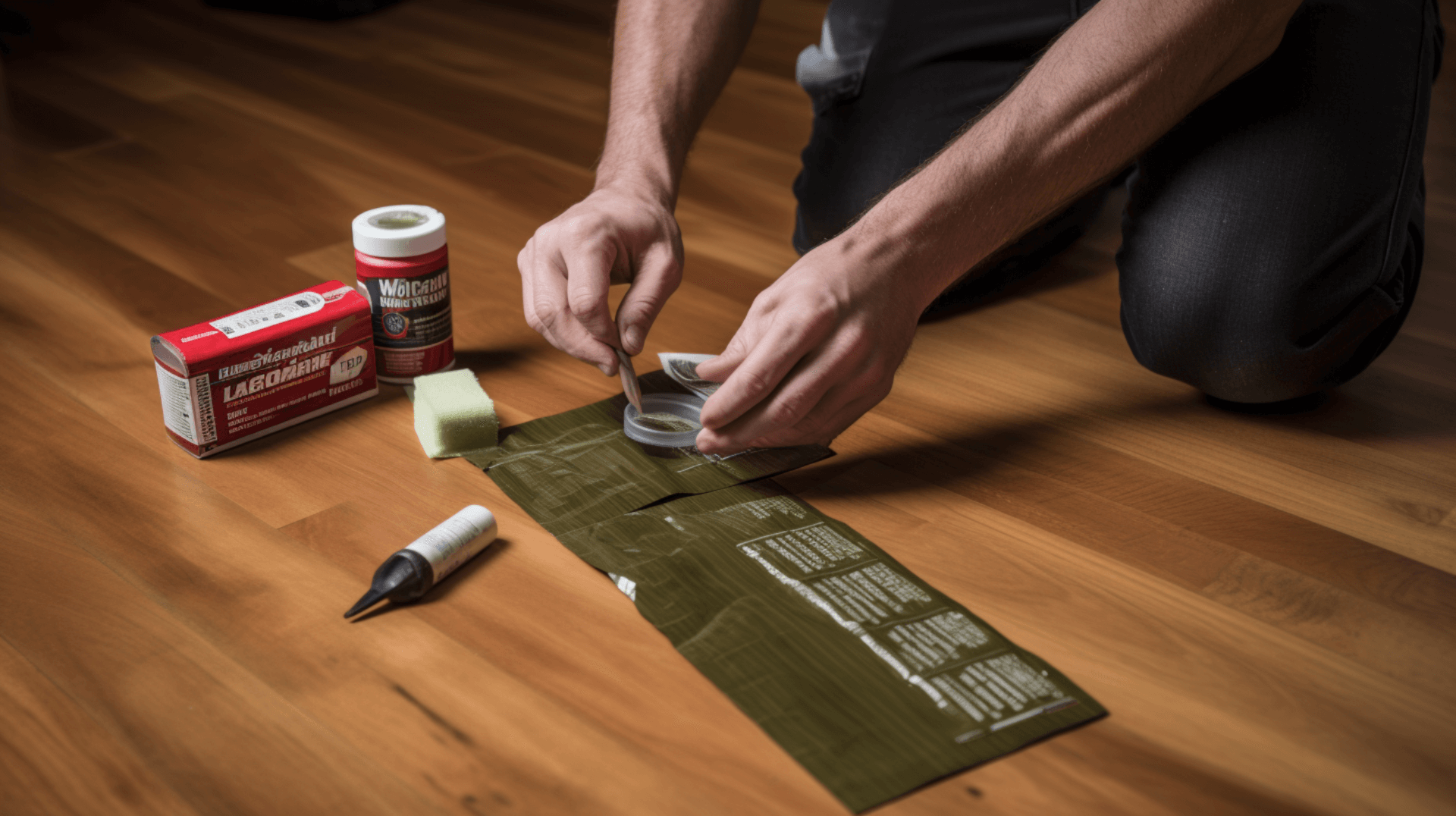
GJP Floor Sanding is a leading provider of wooden floor repair services with over 25 years of experience. We are known for our commitment to customer satisfaction and high-quality workmanship. What sets GJP Floor Sanding apart from other repair services is our comprehensive range of services and expertise in the field.
GJP Floor Sanding offers a variety of services to meet your wooden floor repair needs. We provide deep cleaning, polishing, and waxing to restore the floor’s shine and protect it from further damage. We also offer sanding and refinishing services to remove deep scratches and dents, as well as structural repairs to address any underlying issues. Additionally, we can provide advice on the best materials and finishes for your floor, as well as the best techniques for repair.
In addition to our repair services, GJP Floor Sanding also offers a range of finishes to suit your needs. We provide oil-based, water-based, and wax-based finishes, each with its own unique characteristics and benefits. We also offer a range of polishes and stains to enhance the natural beauty of the wood and provide a warm, rich appearance.
GJP Floor Sanding understands the importance of regular maintenance for wooden floors. We provide a comprehensive maintenance service that includes regular sweeping or vacuuming to remove dirt and debris, using a damp mop to clean the surface, and avoiding the use of harsh chemicals or abrasive cleaners. Our maintenance service helps to keep your wooden floor looking its best and prolong its lifespan.
Overall, choosing GJP Floor Sanding for your wooden floor repair needs ensures that you receive high-quality workmanship, a wide range of services, and expert advice to restore and maintain the beauty of your wooden floor.
Expert Tips from GJP Floor Sanding
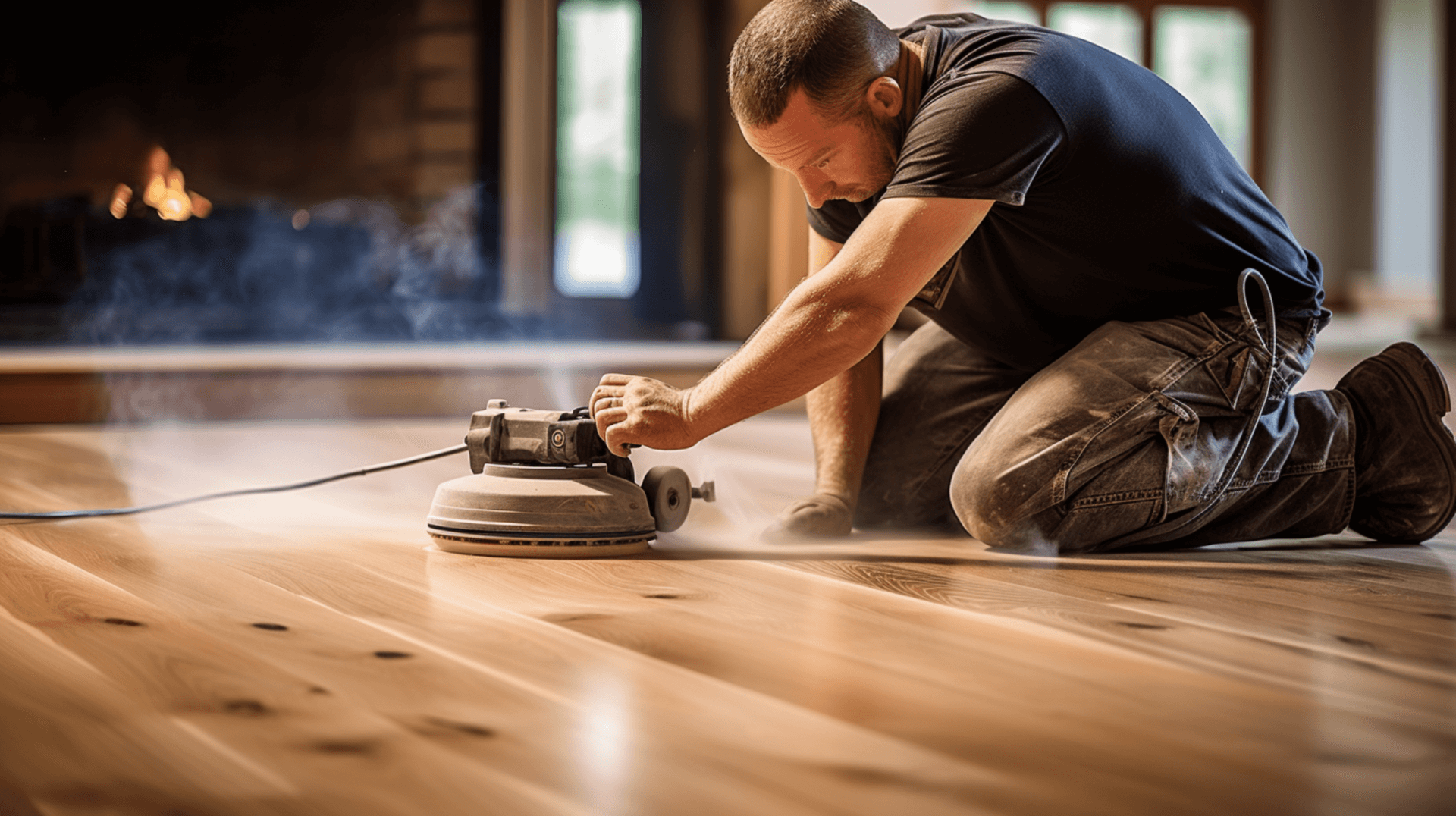
Expert Tips from GJP Floor Sanding
Maintaining wooden floors and preventing future scratches and dents requires regular care and attention. GJP Floor Sanding experts have provided the following tips for homeowners and business owners:
- Regular Cleaning: Sweep or vacuum your wooden floors regularly to remove dirt and debris. This will help prevent scratches and dents caused by dirt particles. Use a damp mop to clean the surface and remove any stubborn dirt or grime. Avoid using harsh chemicals or abrasive cleaners, as they can damage the floor finish.
- Preventing Scratches and Dents: Avoid dragging furniture or heavy objects across the floor, as this can cause scratches and dents. Place felt pads or furniture sliders on the legs of furniture to reduce the risk of damage. Leave room for expansion around the edges of each room and seal the gaps between floorboards and skirting to reduce draughts. When identifying timber suspended floors, it is essential to confirm the construction of each floor individually, as assumptions about one floor being timber may not apply to others.
- Regular Maintenance: Schedule professional maintenance at least once a year to deep clean, polish, and wax the floor. This will restore its shine and protect it from further damage. Professional maintenance can also help identify any potential issues and address them before they become more serious.
During the repair process, it is important to avoid using harsh chemicals or abrasive cleaners. These can damage the floor and cause further damage. Additionally, it is important to choose the correct sandpaper grits for each stage of sanding to achieve the desired smoothness. Always sand in the same direction as the grain of the wood to avoid creating new scratches or marks. When repairing damaged flooring, ensure the moisture content of replacement boards is no more than a 2 percent difference from the existing flooring.
By following these expert tips, homeowners and business owners can effectively maintain their wooden floors, prevent future damage, and ensure successful repairs.
Contact GJP Floor Sanding for Your Repair Needs
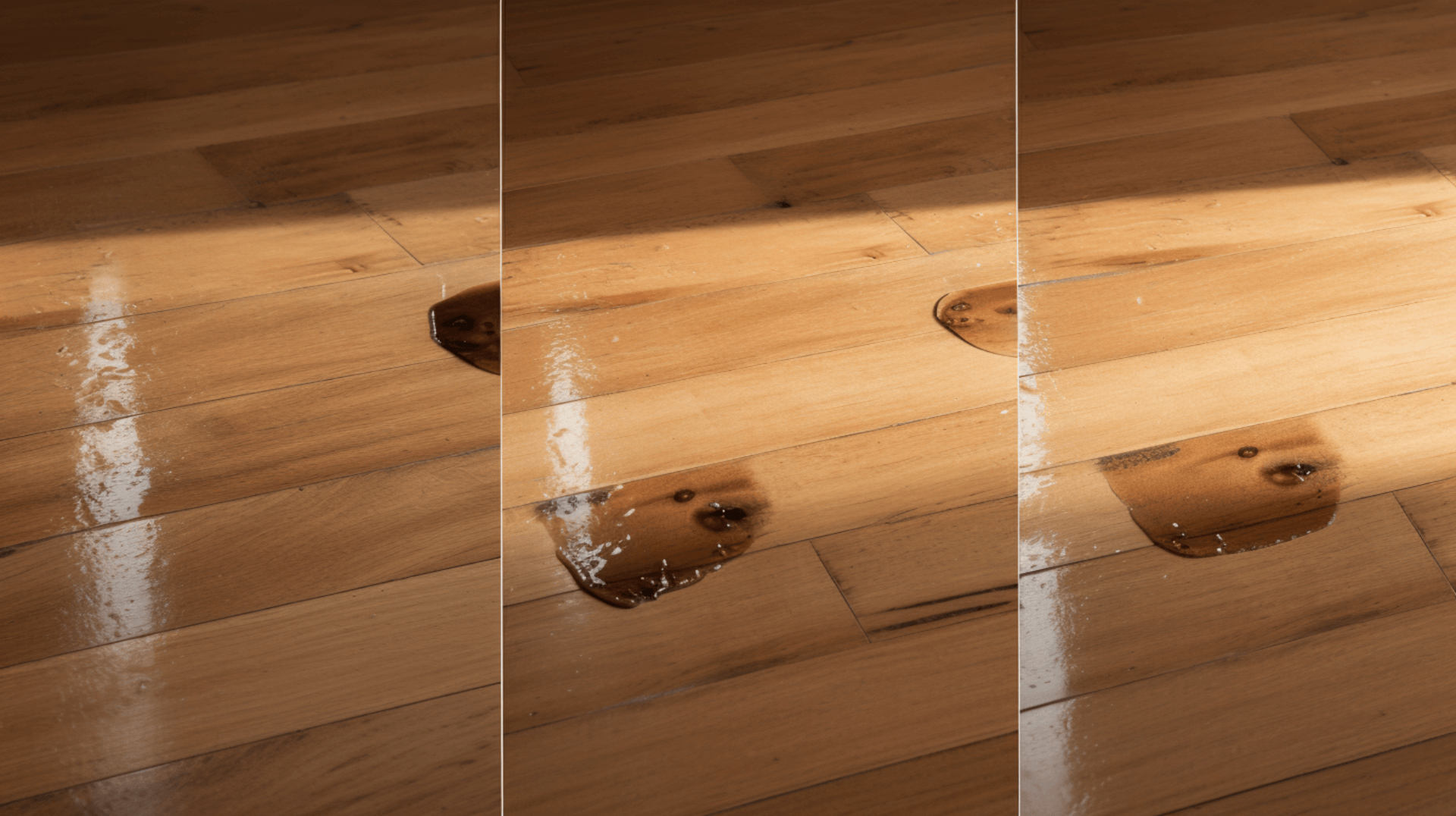
To contact GJP Floor Sanding for a consultation or repair service, you can call our office or visit our website. When contacting them, it is important to provide detailed information about the type of repair needed, the size of the area, and any photos of the damaged area. Additionally, it is important to provide information about any water or condensate pipes in the sub-floor voids, as well as any repairs that may be needed. This will help the team assess the extent of the damage and provide an accurate quote for the repair.
After contacting GJP Floor Sanding, customers can expect to receive a detailed plan for repair. The team will assess the damage and provide advice on the best materials and finishes for the floor, as well as the best techniques for repair. We will also provide a timeline for the repair and answer any questions you may have. GJP Floor Sanding is known for our commitment to customer satisfaction and high-quality workmanship, ensuring that your wooden floor is restored to its original condition.
